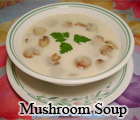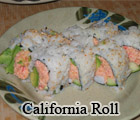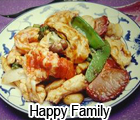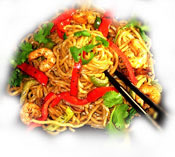
Mountain Jiuhua, besides its beautiful scenery, there are still something unusual worth seeing there——the Incarnation. Until now 14 bodies have been found, 13 of which are monks, 1 is a nun, and this remarkable phenomenon has drawn the wide attention from all walks of life.
Incarnation basically means flesh and blood born by one's parents. Whereas in Buddhism it refers to the whole Buddhist relic of someone who is benevolent and wise. Buddhist doctrine says: “there is a difference of complete and in complete between the relics.” Complete Buddhist relics are those of the eminent monks or perfect ones. After they died their bodies stayed intact even though a long time has elapsed, the bodies are always fresh. Incomplete ones are the remains after being burnt. Jin Gang Sutra says: Buddhist relics are rare and can only be obtained under the circumstance of strict self's cultivation in the condition of abstinence, calm and intelligence. Only highly cultivated monks and nuns can become Buddhist relics after death.
Incarnation is different from mummy. In the old times in Egypt, the funeral ceremony was very simple, digging a shallow hole and then covering with sand. Due to the hot dry weather in desert, the dead body was immediately dehydrated when covered with sand. That is the nature-made mummy. Later, dead bodies were operated by human to mummies. The internal organs and brains taken out, and the bodies were kept under the protection of medicines. In Xinjiang, China, mummies were once unearthed, but actually they were desiccated corpse, they exit for a long time because of the hot dry weather there. However, these corpses are now rare.
Mountain Jiuhua locates on the south bank of the Yangtze River. The climate there is humid and cool. It lacks the natural condition for mummification. Existing bodies have not been modified by medicines. That is queer and till now there isn't any scientific explaination yet.
The custom, of keeping bodies originated from Master Dizang in the Tang Dynasty. In the summer of the Zhengyuan 10 year, he died without illness. His disciples put his body in a stone coffin and opened it 3 years later at the request of him. The body stayed fresh during those years. People believed Dizang Bodhisattva reincarnacted in him. From then on, when a monk there died, his body will be kept for a period (from 7 days to 3 years) to whether the body can turn into a whole buddhist relic. The encoffing method is quite special. First clean the body, make it sit cross-legged in a ceramic pot, then surround it with wood charcoal till the neck, thirdly, cover the head with a bag of lime. All the materials help to dehydrate the body. The last step is to seal up the pot with yelllow earth. If the body decays in the pot and becomes smelly. It will be burnt by lighting the wood chacoal through a hole at the bottom. Sitting in a pot is only an exopathic factor, whether the body will stay fresh depend on how he cultivated himself when alive. Those masters were veqetarint and when they knew they would die, they didn't eat or drink anything, therefore, there were little fat and water in the body, which was the basic factor of staying intact. Despite this only a few bodies can be kept fresh, which would be paint and after 3 years be gilded. There is explaination buddhism to this phenomena, however, people hope scientists will study this and give reasonable explaination.















 PREVIOUS
PREVIOUS